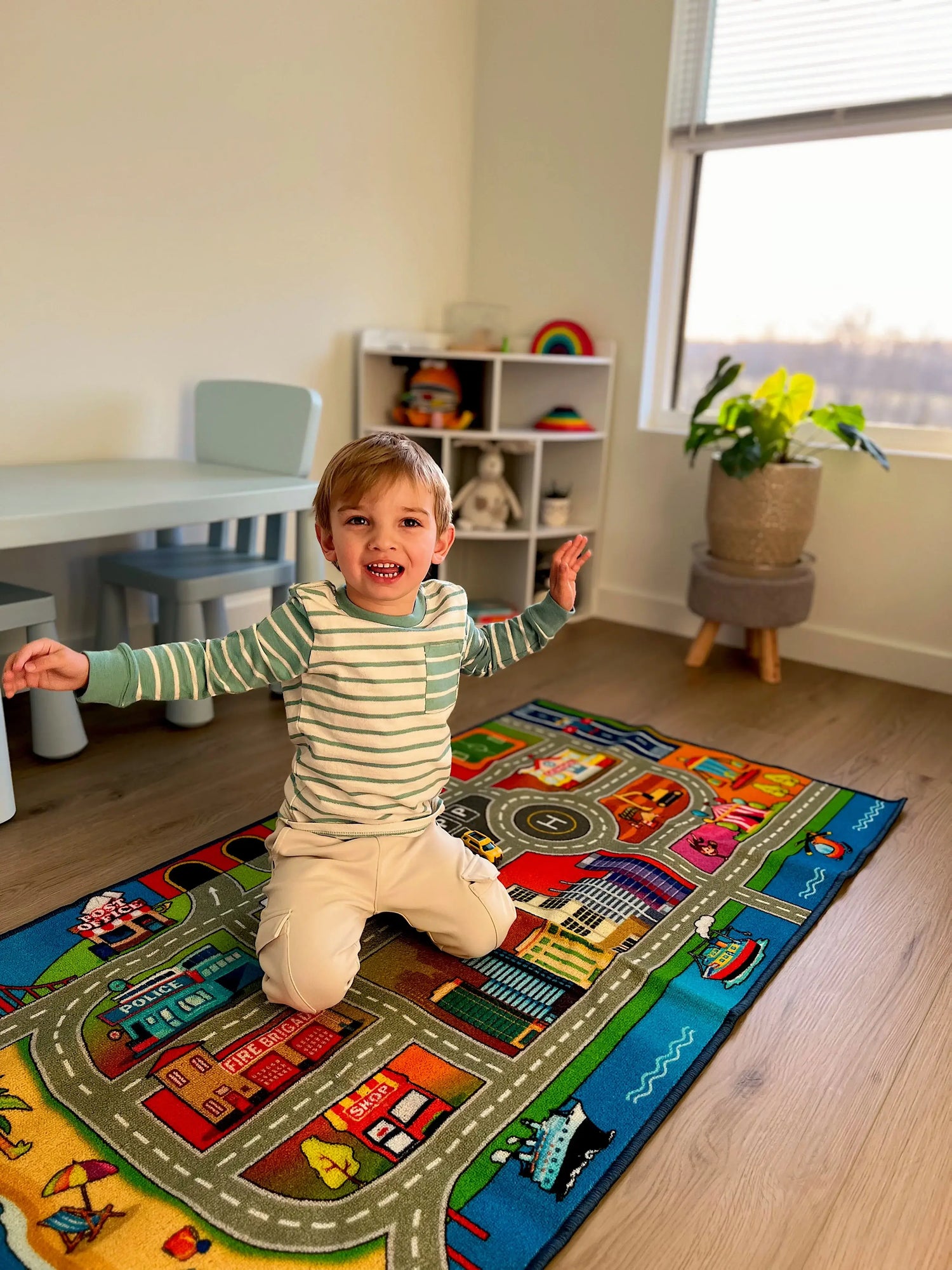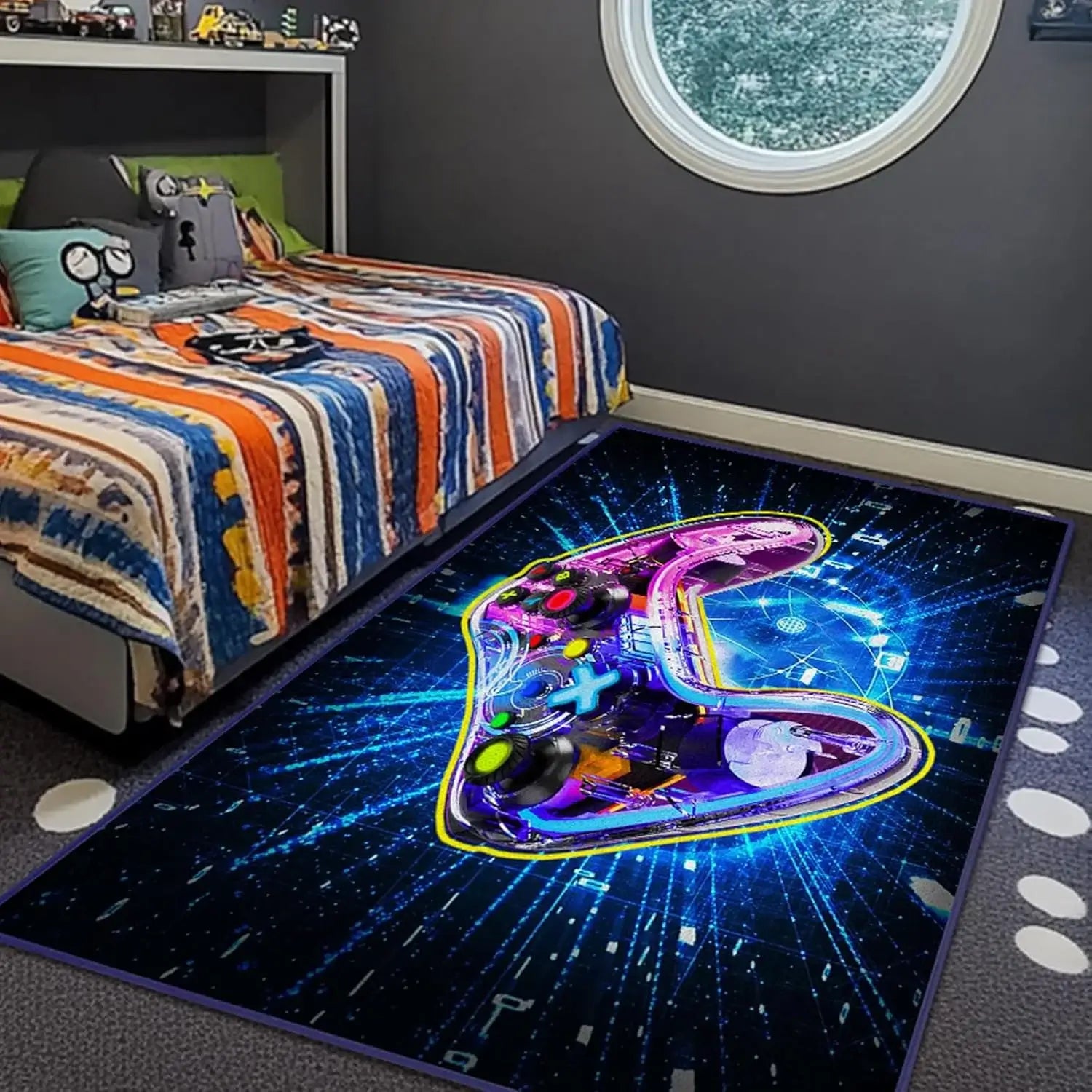Understanding Neurodivergent Learning Profiles
Neurodivergence encompasses a wide range of neurological differences that affect how individuals process information, interact with their environment, and learn new concepts.
According to the National Institute of Mental Health, approximately 9.4% of children have ADHD, while the CDC estimates that 1 in 44 children are diagnosed with autism spectrum disorder.
These statistics don't include the many students with sensory processing differences, dyslexia, or other learning variations who benefit from neurodivergent-friendly classroom design.
Each neurodivergent learner brings unique strengths and challenges to the classroom.
Some students may be hypersensitive to certain textures, sounds, or visual stimuli, while others may seek intense sensory input to help regulate their nervous systems.
Understanding these individual differences is essential for creating classroom environments that support rather than overwhelm diverse learners.
Sensory Processing and Learning Success
Sensory processing affects every aspect of learning, from a student's ability to sit still and focus to their capacity for emotional regulation and social interaction.
The Sensory Processing Disorder Foundation explains that when students' sensory systems are dysregulated, their cognitive resources become focused on managing sensory input rather than engaging with academic content.
Specialized classroom rugs provide crucial sensory input through tactile experiences, proprioceptive feedback, and visual organization that can help neurodivergent students achieve optimal arousal levels.
The right rug can provide calming deep pressure for an overstimulated student or offer alerting texture input for a student who needs increased sensory awareness.
For more in-depth information on how sensory processing affects student performance, visit our comprehensive guide on neurodivergent learning needs.
ADHD-Friendly Classroom Design Through Strategic Rug Placement
Students with ADHD often struggle with attention regulation, impulse control, and hyperactivity that can interfere with traditional classroom expectations.
However, these same students frequently demonstrate exceptional creativity, problem-solving abilities, and dynamic thinking when provided with appropriate environmental supports.
Movement Integration and Fidget-Friendly Surfaces
Traditional classroom settings that require prolonged sitting can be particularly challenging for students with ADHD.
Textured large classroom rugs provide opportunities for subtle movement and sensory input that can help these students maintain focus without disrupting instruction.
Rugs with interesting textures allow students to run their fingers along patterns, trace designs with their toes, or shift positions while remaining engaged with lessons.
Research from Harvard Medical School demonstrates that physical movement and sensory input can significantly improve attention and executive function in students with ADHD.
Classroom rugs that encourage appropriate movement and provide sensory stimulation support these neurological needs.
Visual Organization and Attention Support
Many students with ADHD benefit from clear visual boundaries and organized spaces that help direct attention and reduce distractions.
Rugs with defined sections, clear patterns, or designated seating areas can provide the structure these students need to focus on instruction rather than navigating unclear spatial expectations.
Color choices also matter significantly for ADHD-friendly design.
While bright colors may be overstimulating, opting for pastel classroom rugs with muted tones can provide a calming visual anchor for sensitive students.
Understanding individual student needs allows educators to select rugs, perhaps vibrant colorful classroom rugs for under-stimulated learners, that support attention regulation.
Explore our collection of ADHD-friendly classroom rugs designed with attention and movement needs in mind.
Autism Spectrum Support Through Predictable Environments
Students with autism spectrum disorders often thrive in environments that provide predictability, clear expectations, and sensory regulation opportunities.
The characteristics that define autism—differences in social communication, repetitive behaviors, and sensory processing—can be supported through thoughtful environmental design that reduces anxiety and promotes engagement.
Routine and Predictability Through Designated Spaces
Many students with autism benefit from consistent routines and predictable environments that reduce anxiety and support emotional regulation.
Designated rug areas for specific activities—morning meetings, story time, or quiet work—help create visual schedules and spatial routines that students can rely on throughout the day.
The Autism Society emphasizes that structured environments with clear expectations support learning success for students with autism.
When students know that the blue rug means math time and the green rug signals reading activities, they can prepare mentally for transitions and engage more readily with instruction.
Sensory Regulation and Self-Advocacy
Students with autism often have intense sensory preferences and aversions that affect their ability to participate in classroom activities.
Some may seek deep pressure input by lying on a thick, plush reading rug, while others may prefer smoother textures that don't trigger sensitivities.
Providing multiple rug options with different textures, thicknesses, and sensory properties allows students to make choices about their sensory environment.
This self-advocacy opportunity helps students develop awareness of their own needs while accessing the sensory input necessary for optimal learning.
Social Skills Development Through Shared Spaces
While students with autism may face challenges with social interaction, carefully designed shared rug spaces can provide structured opportunities for peer interaction and social skills development.
Circle time rugs with clearly marked individual spaces help students participate in group activities while maintaining the personal space they may need to feel comfortable.
Sensory Processing Differences and Tactile Considerations
Sensory processing differences exist on a continuum, with some students being hypersensitive to sensory input while others are hyposensitive and seek intense sensory experiences.
Understanding these differences is crucial for selecting rugs that support rather than overwhelm diverse sensory systems.
Hypersensitive Students and Gentle Textures
Students who are hypersensitive to tactile input may be distressed by rough, scratchy, or highly textured rug surfaces.
These students often perform best with smooth, soft textures that provide comfort without overwhelming their sensitive nervous systems.
Natural fiber rugs with gentle textures can provide grounding input without triggering defensive responses.
According to research from Temple University, sensory processing differences are associated with actual differences in brain structure and function, making environmental accommodations a neurological necessity rather than a preference.
Hyposensitive Students and Alerting Input
Students who are hyposensitive to sensory input may seek intense tactile experiences to help regulate their nervous systems and maintain alertness for learning.
These students may benefit from rugs with varied textures, raised patterns, or surfaces that provide significant sensory feedback.
Providing multiple texture options allows hyposensitive students to seek the input they need while giving hypersensitive students alternatives that feel comfortable and safe.
This individualized approach recognizes that there's no one-size-fits-all solution for sensory support.
Proprioceptive Input and Body Awareness
Many neurodivergent students benefit from proprioceptive input—sensory information about body position and movement—that helps them understand where their bodies are in space.
Thick, cushioned rugs provide proprioceptive feedback when students sit, lie, or move on them, supporting body awareness and self-regulation.
This type of sensory input can be particularly calming for students who feel dysregulated or overwhelmed, providing the deep pressure that many neurodivergent individuals find organizing and soothing.
Discover our range of sensory-supportive classroom rugs designed for diverse processing needs.
Executive Function Support Through Environmental Organization
Executive function challenges—difficulties with planning, organization, working memory, and flexible thinking—affect many neurodivergent students across diagnostic categories.
Environmental design can provide external structure that supports these internal cognitive processes.
Visual Schedules and Spatial Organization
Rugs can serve as components of visual schedule systems that help students with executive function challenges understand daily routines and expectations.
When specific rugs are associated with particular activities or times of day, they provide environmental cues that support memory and planning skills.
Color-coded rug systems can help students navigate classroom expectations without relying solely on working memory.
For example, students might learn that red rugs indicate quiet work time, while yellow rugs signal collaborative activities.
Transition Support and Emotional Regulation
Many neurodivergent students struggle with transitions between activities, locations, or cognitive demands.
Designated transition rugs—spaces where students can pause, regulate, and prepare for the next activity—provide environmental support for these challenging moments.
These transition spaces work best when they're designed with calming colors, comfortable textures, and minimal visual distractions that allow students to reset their nervous systems before engaging with new demands.
Creating Calm-Down and Regulation Spaces
Self-regulation is a critical skill for all students, but it can be particularly challenging for neurodivergent learners who may experience more intense emotions, sensory overwhelm, or attention difficulties.
Dedicated regulation spaces anchored by carefully selected rugs provide students with tools for managing their emotional and sensory states.
Design Principles for Regulation Spaces
Effective calm-down spaces should feel separate from the main classroom activity while remaining easily accessible and non-punitive.
The rug choice for these spaces is crucial—it should provide comfort and sensory input without being overstimulating or distracting.
Neutral colors, soft textures, and manageable sizes work well for regulation spaces.
Some students may benefit from weighted elements or varied textures that provide different types of sensory input based on individual needs.
Teaching Self-Advocacy and Regulation Skills
When students have access to well-designed regulation spaces, they can learn to recognize their own needs and take appropriate action before reaching crisis points.
This self-advocacy skill development is particularly important for neurodivergent students who may face ongoing challenges with emotional and sensory regulation.
Providing multiple options—different textures, sizes, and locations—allows students to experiment and discover what works best for their individual nervous systems.
This exploration process builds self-awareness and independence that extends far beyond the classroom.
Inclusive Design Benefits for All Students
While neurodivergent-friendly classroom design specifically addresses the needs of students with neurological differences, these environmental modifications benefit all learners.
Universal Design for Learning principles suggest that when we design for diversity, we create better learning environments for everyone.
Neurotypical Students and Sensory Awareness
Students without diagnosed neurodivergent conditions also benefit from sensory-supportive environments that recognize individual differences in processing styles, attention patterns, and regulation needs.
Providing varied sensory options helps all students develop awareness of their own learning preferences and regulation strategies.
Building Empathy and Understanding
When classrooms include obvious accommodations for diverse learners—like varied seating options, sensory tools, and regulation spaces—all students develop understanding and empathy for individual differences.
This inclusive approach builds classroom communities that celebrate rather than stigmatize neurological diversity.
Research from Harvard's Center for Education Policy Research demonstrates that inclusive classroom environments benefit both neurodivergent and neurotypical students academically and socially.
Implementation Strategies for Educators
Assessment and Individual Planning
Effective neurodivergent support begins with understanding individual student needs through observation, assessment, and collaboration with families and support professionals.
Not all neurodivergent students will benefit from the same environmental modifications, making individualized planning essential.
Consider conducting simple preference assessments where students can try different rug textures, locations, and arrangements to identify what works best for their learning and regulation needs.
Collaboration with Support Teams
Occupational therapists, special education specialists, and other support professionals can provide valuable insights about specific sensory and environmental needs.
Collaborating with these team members ensures that classroom rug selections align with individual student goals and therapeutic recommendations.
Flexibility and Ongoing Adjustment
Student needs may change throughout the school year as they develop new skills, face different challenges, or experience growth and development.
Maintaining flexibility in rug arrangements and being willing to adjust based on student feedback ensures that environmental supports remain effective and relevant.
For comprehensive support tools and resources, visit our neurodivergent classroom solutions collection.




Leave a comment
This site is protected by hCaptcha and the hCaptcha Privacy Policy and Terms of Service apply.